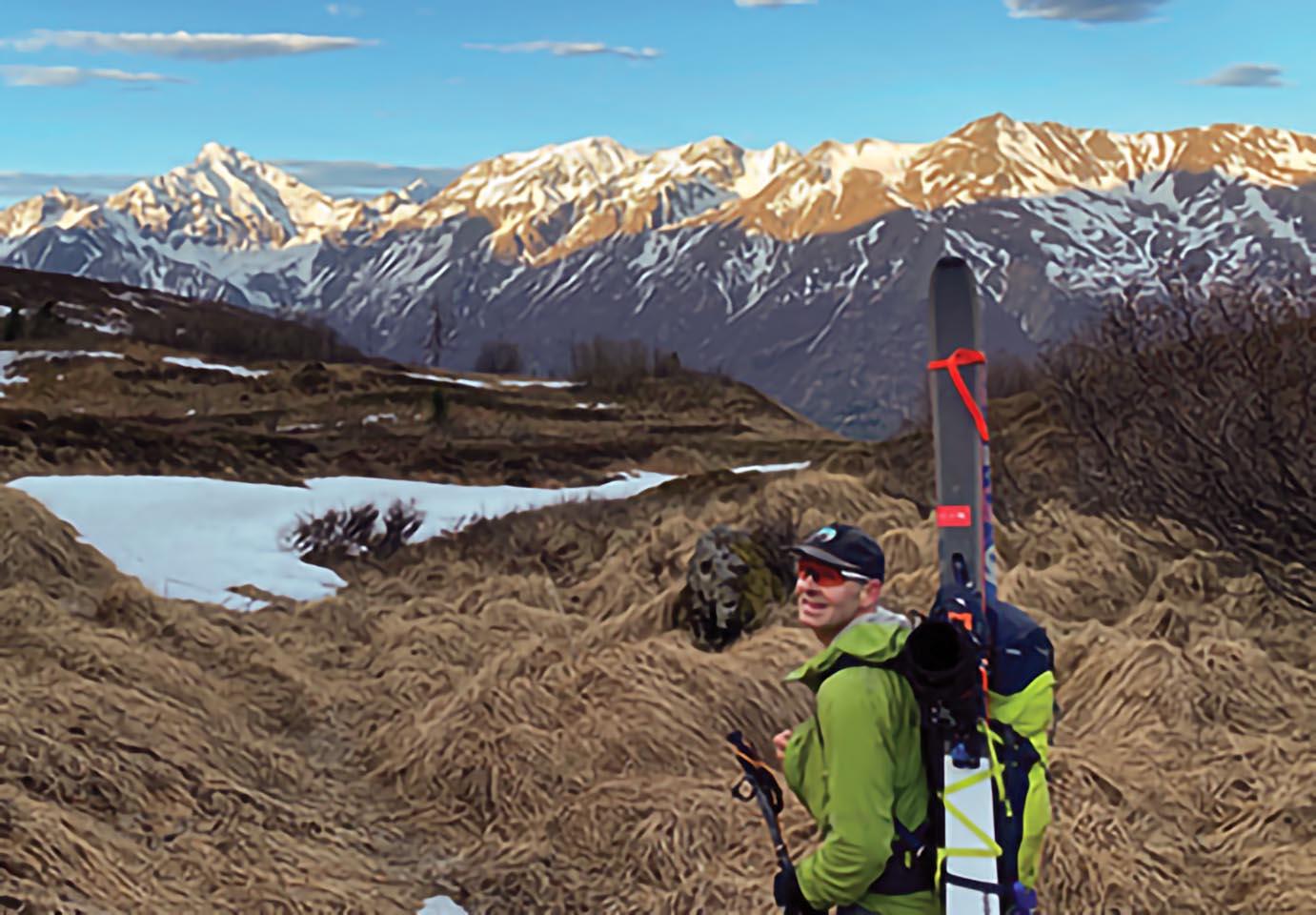Gary Kuehn forms a human connection with clients when working as a mountain guide.
While most people seek stability in their work, Gary Kuehn ’85 prefers to be sliding. After graduating, the physics major and avid skier earned a master’s degree from the Thayer School of Engineering at Dartmouth, studying the mechanics of ice. Then he left the lab and started down a path that’s led him to snowy and high-stakes adventures on six continents.
As a guide with the International Federation of Mountain Guides, Kuehn has worked with clients of a wide range of ages and nationalities, taking them rock climbing, alpine climbing, ski touring, ski mountaineering, and heliskiing (skiing in locations only reachable by helicopter, or climbing).
He also does avalanche forecasting, teaches avalanche safety, trains other guides, and writes for trade journals. But he prefers to think of his many roles as just one: “I get paid to make decisions and coach teams to make good decisions in high-risk and consequential environments,” Kuehn says.
His trail started in Tasmania, Australia, in 1993. Looking for a change from ice research, Kuehn took a job there helping to coordinate climate science expeditions to Antarctica. “I quickly realized it was much more interesting to help other scientists do their work,” he says.
He joined the researchers on their trips and helped them manage the logistics of working in a harsh environment: how to handle equipment with mittens on, how to recognize when the weather is worsening, how to walk on a slippery surface. Many of the Australians he worked with had never seen snow before, and at times Kuehn acclimated them using creative methods: “Having a snowball fight is pretty fun,” he says.
Instead of the two years in Tasmania he’d planned on, he stayed for 10. In between seasonal stints in Antarctica, he took courses in mountain guiding, developing his skills in rock and alpine climbing while working in New Zealand.
These days he’s living closer to the Earth’s opposite pole, in a town near Anchorage, Alaska. Kuehn enjoys the ski guiding he focuses on now because, unlike the rock climbing expeditions he used to lead, “You’re more coaching and facilitating people,” Kuehn says, “so there’s a much more human connection.”
Being on the slopes also gives Kuehn a personal view of the climate change he was helping scientists investigate at the beginning of his career. He can watch glaciers receding, and experiences mid-winter rainstorms that weren’t so frequent in the past. Day to day, though, he thinks more about a faster-moving threat — namely, avalanches.
The most desirable ski conditions, he notes — deep snow, steep terrain — can also be the most dangerous. He and his colleagues use weather observations to track the risk of avalanches, as well as digging down into the snow to examine its layers. “The most common instrument we use is a shovel,” Kuehn says.
If there are unstable layers near the snow’s surface, guides may intentionally (and very carefully) trigger a small avalanche to get that shifty snow out of the way. One way to do this is called ski cutting. In this technique, a person skis quickly across the unstable spot with a partner’s supervision, and “kind of jumps up and down,” Kuehn says.
Kuehn has only twice been caught in “very small” slides he wasn’t expecting, he says. Others in his community haven’t been as lucky. “It’s an unforgiving environment,” Kuehn says. “We’re only as safe as our last decision.”
Still, he gets to spend his days working with “the people who have the same addiction I do,” Kuehn says, “which is sliding on snow in a beautiful mountain environment in a safe way.” Someday he may even make it to the mountains of Morocco and cross the final continent off his list.

